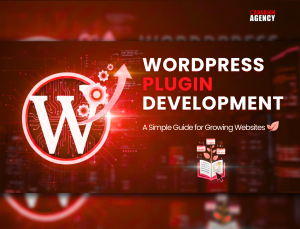iOS apps feel heavenly compared to Android, even on their best hardware. The reason is that iOS was always meant to drive iPhones, whereas Android had other plans initially. Plus, Android OS has to consider the countless hardware technicalities of different phone companies when pushing an update rollout. So, the rollout is slow and full of bugs. But does it have something to do with the build system?
Are iOS apps fluent in their functionality simply because the developers create these apps in a better-equipped integrated development environment?
IDEs and iOS apps
To put it simply, integrated development environments (aka IDEs) are a system of tools and resources that help developers develop, deploy and debug software and applications for web and mobile.
Naturally, these IDEs are different for each operating system, making them one of the most common differentiating factors between Android and iOS apps. iOS IDEs are generally easier to grasp and code in because they prioritize time and energy.
Because Apple carefully programs its devices using Swift, a high-end programming platform with endless possibilities creates device apps with better quality and speed. Still, choosing an IDE for a specific project heavily relies on your budget and the programming language you choose.
Core Features of iOS app IDEs
- Autocomplete Code: An excellent iOS app environment comes with a source code editing space that autocompletes the code for you. You do not have to memorize the correct syntax every time.
- Automated Compilation: Before executing the code, a good environment will compile it for you. The compiler debugs it for the developer and eliminates the massive workload. With such tools, developers only need to focus on logic-building to complete their projects efficiently.
Features like these are some of the compelling reasons why you should choose an IDE for your iOS app. You do not want to do more work for what it is worth.
Must-Have IDEs and Tools for iOS App Development
People will tell you to go with XCode whenever you ask which IDE is best for iOS app development, but the window is not that narrow. Other than XCode, many different IDEs and tools help make better-quality iOS apps. These include:
- XCode
- AppCode
- CodeRunner2
- Atom
- RxSwift
- Mockingbird
- Testflight
- Stack Overflow
- CocoaPods
- Dash

XCode
XCode is undoubtedly a champion for IDEs and tools for iOS app-making. In its 13 iteration cycle currently, it is an Apple-certified IDE insanely famous for its Swift programming language utilization, full text highlighting, and automatic completions. No wonder it is every iOS developer’s first choice to code.
XCode has an assistant button that separates the work screen from the editing one, making the workflow smooth and easier to handle. Several applications for Apple TV, iPhone, iPad, and Mac get built using the XCode environment.
AppCode
AppCode is the brainchild of JetBrains, and it brings healthy competition to Apple’s XCode, given they share many features. With medium synchronization options available, all the XCode files can be opened and altered in AppCode.
AppCode markets itself as an intelligent IDE for macOS and iOS. It covers not only Swift but C, C++, Objective-C, and JavaScript languages. You can use AppCode to design apps for all Apple products. Its intelligent structure makes automation the center point, so you do not have to type the same lines of code every time.
CodeRunner
CodeRunner is another popular IDE among developers and is known for its flexibility and versatility. It supports various languages and has the feature for documentation snippets and tab placeholders. In addition to that, they have TextMate theme support and indentation support, the automatic and interactive console.
CodeRunner hosts 23 dialects of programming languages — a feat achieved by very few mediums.
Atom
Atom is the proprietary IDE of GitHub and is famous for its easy installation of packages and customization. Their most sought-after feature is the ability to hack any IDE and use it on a UNIX system.
RxSwift
RxSwift comes to mind whenever a developer says “nonconcurrent programming.” Nonconcurrent or asynchronous programming means parallel programming. A unit of the project you are working on runs separately from the main thread body and notifies it of completion, whether success or failure.
RxSwift means reactive Swift programming, a massive programming library for iOS apps, making it easier to interact with information. Reactive programming has become popular in recent years, with many software developers coming up with their versions. Other than RxSwift, we have RxJs, RxKotlin, Rx.Net, and RxScale for iOS app making.
Mockingbird
Mockingbird is a tool for micromanaging the earlier phases of an app. It helps in making the sketches for every one of the procedures. You can create interactive and visual wireframes using Mockingbird, and you can even connect various pages easily.
iOS app makers can freely alter and rearrange collar clusters, change the text dimension and tailor the wireframe, so they please. The tool encourages collaboration on a single project by allowing multiple users to log in simultaneously and work together.
Testflight
Testflight is another iOS tool you can use to unwind beta testing. It is a local structure for testing, like an open testing field, where you do your trial and error. With Testflight, you can test the application model of semi-complete and complete items. You can even share the results with your clients.
Stack Overflow
Stack Overflow is not an IDE or a proper tool, yet its significance is equally essential. It is essentially a network of developers and engineers. In the USA, iOS services heavily rely on the functionality of Stack Overflow to provide their signature software features.
Since it is a community, you can find some answers to the problems or issues you face while coding.
CocoaPods
CocoaPods helps with the more straightforward integration of OSX to coordinate with XCode. It is not a separate tool, but it is a tool for XCode IDE.
Dash
Dash is a code-bit administrator. All your API documentation sets can be stacked on Dash for offline viewing later. You can even generate your docset and request some docsets to be included.
In Retrospect
Even though all these IDEs are in the market, many developers still opt to use XCode. It is because all other IDEs use the basic structure of XCode in one way or another. On the other hand, other IDEs have better platform jump connectivity options than XCode allows. Whichever IDE you end up going with, make sure it perfectly fits your vision and app requirements.






